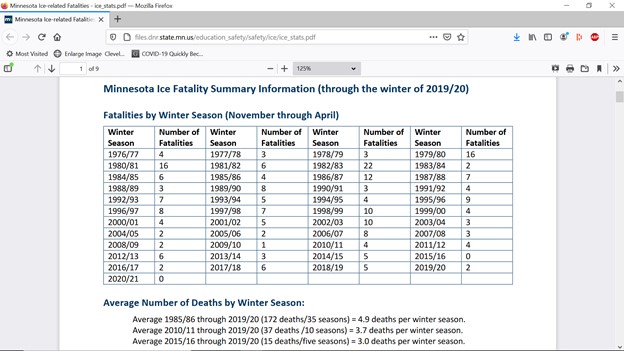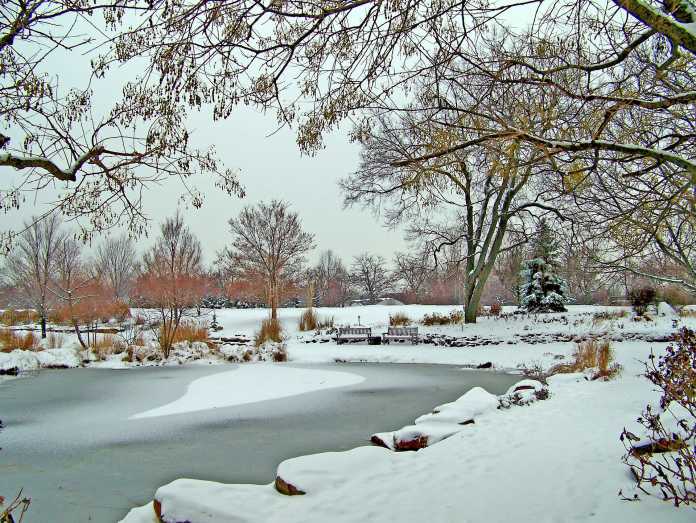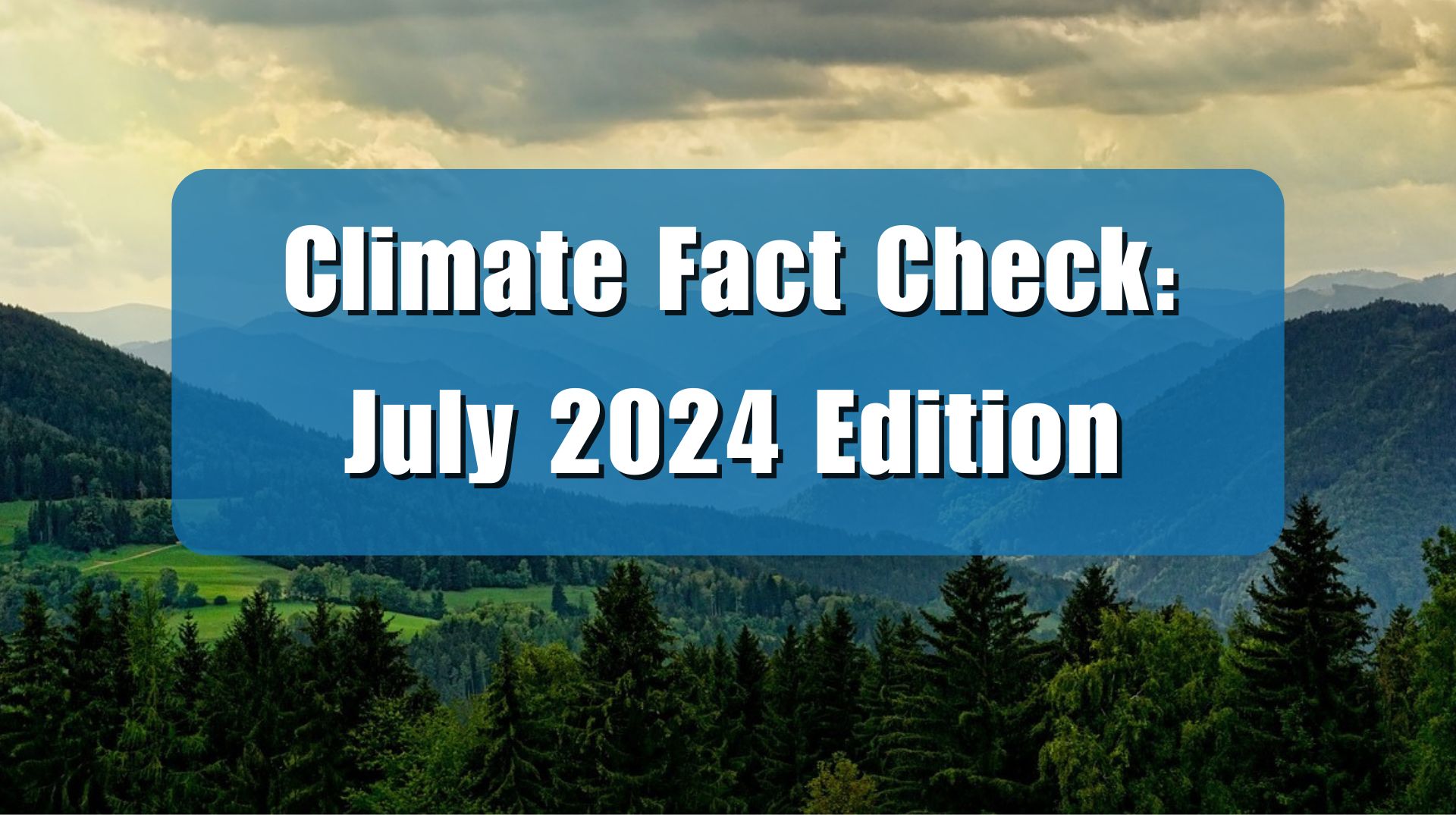The New York Times, Google News, and other corporate media outlets are scaring people with articles today claiming global warming is causing more winter ice drownings. The articles reference a newly published study claiming more people fall through the ice and drown on days when winter temperatures are warmer than is the case on days when winter temperatures are colder. Such a truism, however, does not mean more people are drowning as the Earth modestly warms. To the contrary, real-world data suggest there has either been no change in ice-related drownings, or that ice-related drownings are becoming less frequent as the Earth warms. This stands to reason, as a smaller percentage of the planet experiences conditions in which lakes and ponds freeze in the first place.
The science journal Plos One has just published a study in which scientists analyzed data on people falling through weak surface ice on lakes and ponds and subsequently drown. The study finds that people are much more likely to drown in such a manner when air temperatures are near the freezing mark than when air temperatures are 10-or-more degrees Celsius (14-or-more-degrees Fahrenheit) below freezing. That stands to reason, as surface ice is much deeper and able to hold more weight when temperatures are far below freezing.
The study’s authors report that they examined winter drowning data from 10 northern nations over a period of 26 years. While they report that more people drown when temperatures are closer to the freezing mark, they do not report whether there are any year-by-year trends on whether such drownings are becoming more frequent. Why don’t they do so? Certainly, after compiling and reviewing such data – and doing this comprehensively enough to publish a paper on the correlation between temperatures and ice drowning – they could easily have reported on whether overall ice drownings are becoming more frequent. Almost certainly, the reason they do not report year-by-year trends is because there are no worsening year-by-year trends.
Instead, the authors invite readers to assume that – as a warming world reduces the number of winter days with very thick, stable ice – the same number of people will be out on ice, and the ice will be less stable, causing more people to fall through ice and drown. That logic, however, is flawed.
Warmer temperatures will cause fewer bodies of water to freeze in the first place, meaning that places that currently freeze just enough to create unstable ice will not freeze at all. Instead of people in these locations being tempted to venture out on weak, unstable ice, there won’t be as much ice forming to induce such dangerous behavior. In such locations, we can logically expect fewer rather than more ice drownings as the climate warms.
Moreover, even in colder places that experience long stretches of cold-enough temperatures to form thick, stable winter ice, those places currently experience weak, unstable ice during the late fall and early spring as the ice first forms or first begins melting. A warming world merely shifts the time of year during which these unstable conditions occur. In other words, weak unstable ice will occur in far-north regions in November and March instead of October and April. The overall annual prevalence of unstable ice remains the same, it just occurs in different months than before.
“As winters become milder and lake ice less stable, more children and young adults are falling through the ice and fatally drowning, say York University researchers,” Science Daily reports on the study. But the study’s authors presented no data to support that assertion. They presented absolutely no data showing more people are drowning. Instead, they merely hypothesize that this is the case, even though they compiled data that could support or contradict the hypothesis. The fact that they chose not to publish the data strongly indicates the data contradict their hypothesis, for the reasons explained above.
At worst, the study provided no objective data or evidence from which to draw conclusions about whether more people are falling through ice and drowning in recent years. At best, and more likely, the data show fewer people are suffering ice drowning deaths as the Earth modestly warms.
It is difficult for a casual researcher to find and compile comprehensive data on ice drownings. Such data is compiled and reported, however, by the state of Minnesota. The Minneapolis Star Tribune, coincidentally, is one of the corporate media publications that published an alarmist story about the study. The Star Tribune published an article today titled, “How climate change is making winter ice more dangerous.” But that is not what the Minnesota state data show.
The Minnesota Department of Natural Resources (MDNR) compiles and publishes comprehensive data on ice drownings. According to the MDNR, significantly fewer people are falling through the ice and drowning – despite a growing population in the state – as the climate modestly warms. According to the MDNR:
Average Number of Deaths by Winter Season:
Average 1985/86 through 2019/20 (172 deaths/35 seasons) = 4.9 deaths per winter season.
Average 2010/11 through 2019/20 (37 deaths /10 seasons) = 3.7 deaths per winter season.
Average 2015/16 through 2019/20 (15 deaths/five seasons) = 3.0 deaths per winter season.

The Indiana Department of Natural Resources publishes similar data, showing no trend in the number of people falling through ice and drowning, even though Indiana’s population is growing.
In summary, the fact that people are more prone to fall through thin ice than thick ice does not necessarily mean that climate change is causing more people to fall through ice and drown. Instead, to the extent real-world data are compiled and reported, the data indicate fewer people, rather than more people, are falling through ice and drowning as the Earth modestly warms.

















